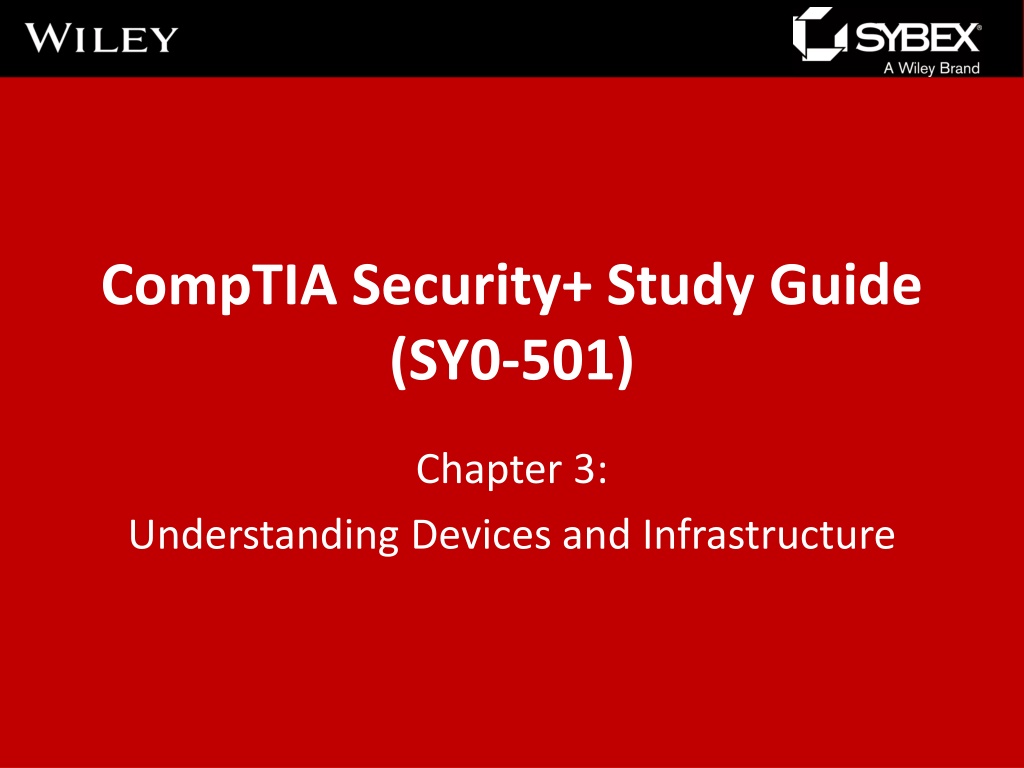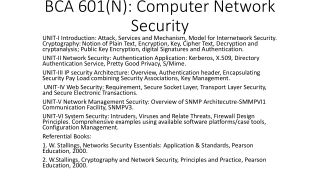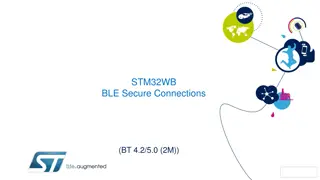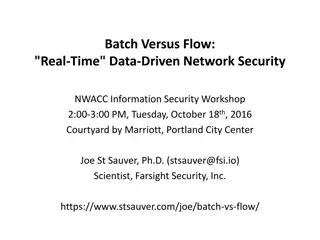Understanding Devices and Network Security Implementation
This content discusses the installation and configuration of network components to enhance organizational security. It covers topics such as intrusion detection systems (IDS), different types of IDS approaches, passive and active responses to intrusions, and using hubs to attach network-based IDS. The importance of monitoring network activities and responding effectively to threats is emphasized.
- Network security
- Intrusion detection systems
- Network components
- Security implementation
- Organizational security
Download Presentation

Please find below an Image/Link to download the presentation.
The content on the website is provided AS IS for your information and personal use only. It may not be sold, licensed, or shared on other websites without obtaining consent from the author. Download presentation by click this link. If you encounter any issues during the download, it is possible that the publisher has removed the file from their server.
E N D
Presentation Transcript
CompTIA Security+ Study Guide (SY0-501) Chapter 3: Understanding Devices and Infrastructure
Chapter 3: Understanding Devices and Infrastructure Install and configure network components, both hardware- and software-based to support organizational security
Designing with Security in Mind Firewalls VPNs and VPN concentrators Intrusion detection systems
Intrusion Detection Systems An intrusion detection system (IDS) is software that runs on either individual workstations or network devices to monitor and track network activity. Intrusion detection systems (IDSs) are becoming integral parts of network monitoring. Intrusion detection (ID) is the process of monitoring events in a system or network to determine whether an intrusion is occurring An intrusion is defined as any activity or action that attempts to undermine or compromise the confidentiality, integrity, or availability of resources.
Chapter 3: Protecting Networks IDSs use four primary approaches Behavior-based detection Signature-based detection, also commonly known as misuse-detection IDS (MD-IDS) Anomaly-detection IDS Heuristic IDS
Using a Hub to Attach NIDS to the Network
Implementing a Passive Response Passive response : The most common type of response to many intrusions. In general, passive responses are the easiest to develop and implement. Some passive response strategies Logging Notification Shunning
Implementing an Active Response Active response Involves taking an action based on an attack or threat An active response will include one of these reactions: Terminating processes or sessions Network configuration changes Deception
Host-Based IDs A host-based IDS (HIDS) is designed to run as software on a host computer system. HIDSs are popular on servers that use encrypted channels or channels to other servers.
Chapter 3: Protecting Networks Network Intrusion Prevention Systems (NIPSs) focus on prevention. These systems focus on signature matches and then take a course of action.
Security-Related Devices Router Switch Proxy Load balancer Access point SIEM DLP NAC Mail gateway Bridge SSL/TLS accelerators SSL decryptors Media gateway

























